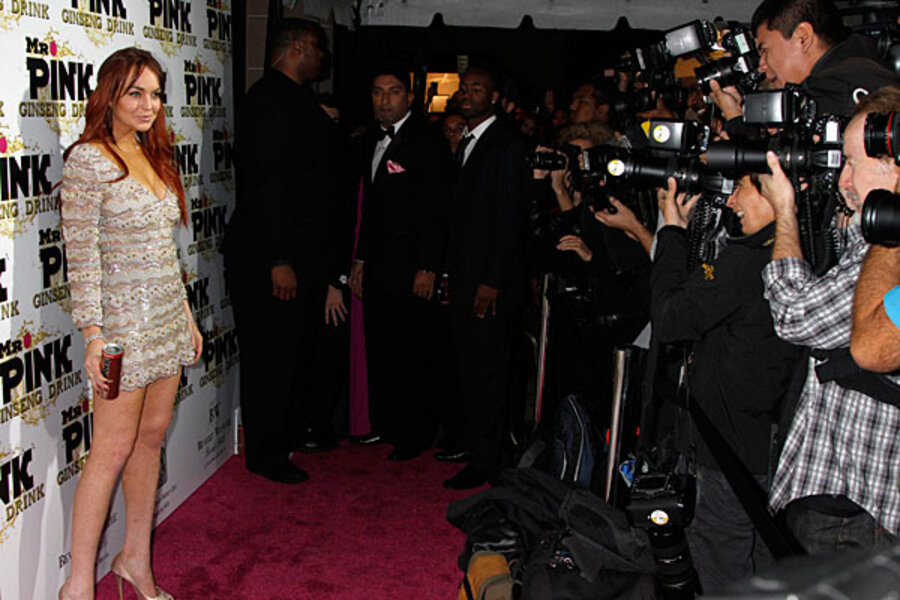Lindsay Lohan intervention: Why did it fail?
Loading...
| Los Angeles
The saga of actress Lindsay Lohan took another turn this weekend when her father apparently confronted her about her drug and alcohol abuse but failed to persuade her to enter treatment.
According to reports in local entertainment outlets, Michael Lohan's attempted intervention backfired, with Ms. Lohan calling the police. Other family members, such as her mother, Dina, spoke out against the father’s efforts. They deny that the actress has relapsed into substance abuse.
This latest episode has highlighted planned interventions – the tightly scripted, often last-ditch attempts by friends and family to rein in substance abusers – and why they succeed or fail. Mr. Lohan reportedly planned his intervention for weeks, but Ms. Lohan's reaction is indicative of how difficult they can be. Sometimes, they can work even with someone who doesn't want to listen, experts say, but professional help and full family support are usually crucial – and point to why Ms. Lohan resisted.
The role of the family cannot be overemphasized, says Carole Lieberman, a psychiatrist in Beverly Hills, Calif. Interventions can work when the addict sees that a loved one is paying attention “and really cares,” she adds.
But Ms. Lohan and others like Britney Spears were exploited as child stars “for the fame and fortune they brought to their parents,” says Dr. Lieberman, who profiled the pair for her book, “Bad Girls: Why Men Love Them & How Good Girls Can Learn Their Secrets.”
Lohan is fighting her father's attempts at intervention “because she is so filled with rage at both of her dysfunctional parents, and because, as with all addicts, she doesn't want to be stopped,” she says.
Moreover, she adds, “Michael Lohan's efforts are somewhat thwarted by Dina” taking her daughter's side.
Recovered addict Jenifer Madson, whose book, “Living the Promises,” comes out in the spring, agrees that family must be part of any successful healing process. She did not experience a family intervention; she hit bottom and came to the recovery process on her own. But she says her husband has been key to her continuing sobriety.
“Intervention is no magic bullet, but that shouldn’t stop people from trying to get the message across that their behavior has not gone unnoticed and they have the support of those who love them,” she says.
An intervention did work with Ms. Spears, whose father finally stepped in and became her conservator, and it could work with Lohan, say others.
Done properly, with preparation and follow-through, interventions can have an extraordinarily high rate of success, says Harvard Medical School psychiatrist John Sharp. A regular on the television program, “Celebrity Rehab with Dr. Drew,” Dr. Sharp says the key is tapping the professionals with the skills to handle the scenarios that might emerge in an intervention.
The Hollywood gossip machine doesn't help. Often, he says, “what we think of as a celebrity intervention is a whole lot of noise that turns into a fiasco without much hope of someone actually getting the help they need.”
But Sharp says professional interventionists – who are often recovered addicts – are able to step back from the process and help those who are unwilling to help themselves move past the excuses and resistance.
The notion that a person has to be entirely willing to stop addictive behaviors for the treatment process to "stick" is a widespread notion in the recovery community, says Nicholas Kardaras, clinical director of The Dunes in East Hampton, N.Y.
“But I've seen firsthand that that's not always necessarily true,” he says via e-mail. “I have seen successfully recovered clients who had been kicking and screaming – literally – in their resistance to the recovery process. (Indeed, for some, their 'intervention' was the forcible incarceration of prison)."
"And yet even in some of those extreme cases, the intervention worked as the client was able to gain some much needed, abstinence-induced clarity – which then led to the willingness to meaningfully engage in the recovery process,” he adds.
He notes that he is planning an intervention with his team this weekend. “Will the intervention work? Time will tell,” he notes. “But as I stress to the family members, at least their loved one will have a fighting chance to save their life.”







